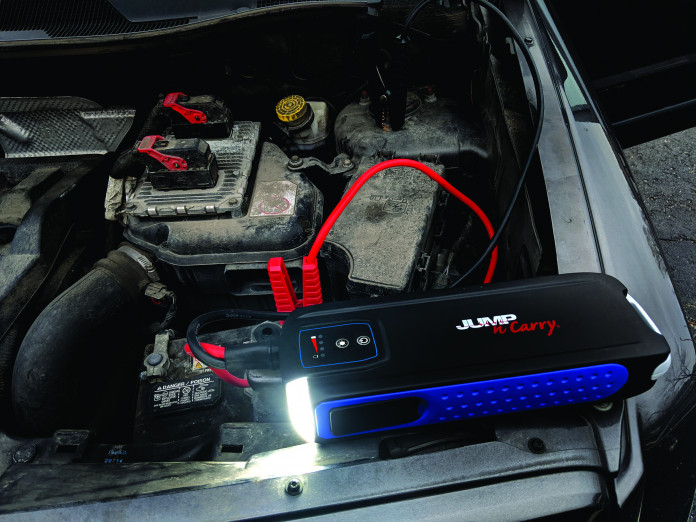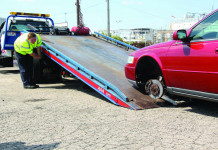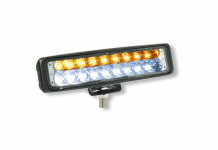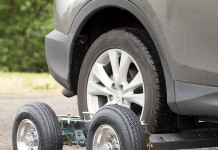Ten years ago, almost all handheld jump starters were powered by lead acid batteries. Since then, the number of options when it comes to jump starters has ballooned. Beyond lead acid batteries, there are now many jump starters powered by lithium batteries and ultracapacitors as well as other power supplies… the number of options has never been so numerous. As a buyer, more choice is great, but it also means there is a lot more to sort out to make sure that you find the right solution for your needs. We believe that the best approach for operators is to work backward from your specific needs identifying the solution that best meets them. Here is where we will address the pros and cons of different approaches to help you sort out the options.
Lead Acid
 We’ll start with the granddaddy of jump starter power supplies. The key benefits of lead acid when it comes to jump starting are its ability to deliver high power, ability to deliver extended cranking durations, ability to perform in cold temperatures, ability to withstand abuse and ability to hold its charge for extended periods and still be useful for jump starting. The biggest drawbacks of the lead acid option are weight and size. It is definitely the heaviest of the jump starting options and typically the bulkiest.
We’ll start with the granddaddy of jump starter power supplies. The key benefits of lead acid when it comes to jump starting are its ability to deliver high power, ability to deliver extended cranking durations, ability to perform in cold temperatures, ability to withstand abuse and ability to hold its charge for extended periods and still be useful for jump starting. The biggest drawbacks of the lead acid option are weight and size. It is definitely the heaviest of the jump starting options and typically the bulkiest.
When it comes to high demand jump starting, both in terms of frequency and in terms of power requirement, lead acid is a great option. Hard to start vehicles often require multiple starting attempts and extended cranking times. The deep reserve capacity of most lead acid solutions is particularly well suited to such circumstances. In addition, if you find yourself jump starting multiple vehicles per day, lead acid is a desirable choice.
Lithium
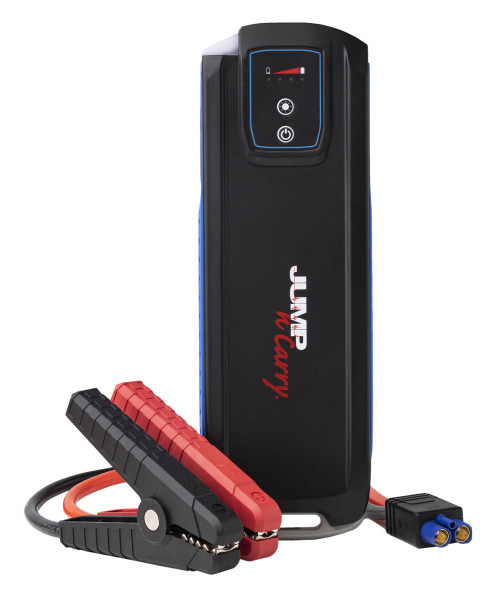 Lithium jump starters have been around in commercial settings for about seven years and have evolved significantly in that time. The key benefits of lithium when it comes to jump starting are its ability to hold a charge for extended periods and its ability to deliver other functions such as charging of small electronics and its light weight and compact size. The biggest drawbacks are its lack of abuse tolerance, its reduced performance when temperatures drop and its difficultly with extended cranking (most units incorporate safety features which limit cranking duration and depth of discharge).
Lithium jump starters have been around in commercial settings for about seven years and have evolved significantly in that time. The key benefits of lithium when it comes to jump starting are its ability to hold a charge for extended periods and its ability to deliver other functions such as charging of small electronics and its light weight and compact size. The biggest drawbacks are its lack of abuse tolerance, its reduced performance when temperatures drop and its difficultly with extended cranking (most units incorporate safety features which limit cranking duration and depth of discharge).
When it comes to convenience, it is hard to beat lithium. Its light weight and compact size mean that you can have a relatively powerful jump starter in a small package. Lithium’s ability to deliver great, more reliable power has increased in recent years as new battery constructions have been introduced. Also, the safety packages typically found on lithium units reduce the likelihood of operator error with features such as reverse polarity protection and over voltage shut down. If you value convenience with additional features, and aren’t starting overly demanding vehicles, working in extremely cold temperatures or jump starting dozens of vehicles per day, lithium might be a great answer for you.
Ultracapacitor
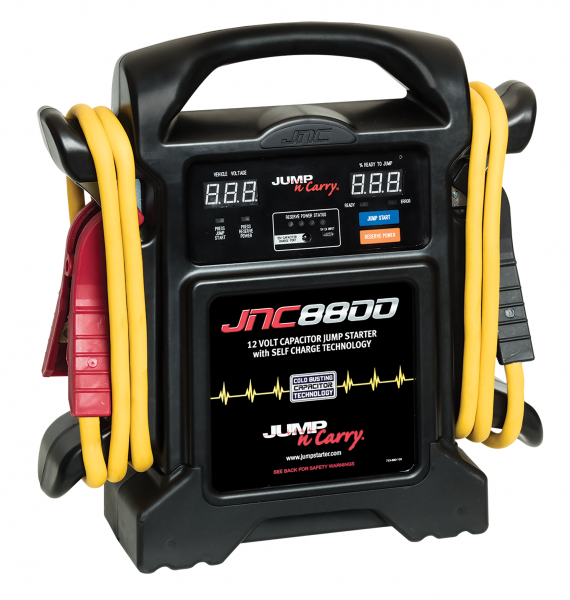 Ultracapacitor jump starters provide a totally different power profile than lead acid or lithium jump starters making them great for some operations but likely less desirable for others. The key benefits of ultracapacitor jump starters are their massive power to weight ratio, their exceptional cold temperature performance, the speed with which they give their power to the jump starting application (more power faster is always better) and their exceptional longevity. The biggest drawbacks of the ultracapacitor option are their lack of reserve capacity and the speed with which they discharge (don’t hold a charge for long).
Ultracapacitor jump starters provide a totally different power profile than lead acid or lithium jump starters making them great for some operations but likely less desirable for others. The key benefits of ultracapacitor jump starters are their massive power to weight ratio, their exceptional cold temperature performance, the speed with which they give their power to the jump starting application (more power faster is always better) and their exceptional longevity. The biggest drawbacks of the ultracapacitor option are their lack of reserve capacity and the speed with which they discharge (don’t hold a charge for long).
When it comes to high frequency starting and high power starting, ultracapacitor units are a great option. Plus, they typically weigh just a third of an equivalently powerful lead acid unit. That said, keeping them charged can be a challenge. That’s why you’ll often find them mated to a battery of some sort to allow them to be charged even when an external source of power is unavailable. For instance, our Jump-N-Carry units contain a small lithium battery to charge the ultracapacitor when other options are not available. This is something that should be kept in mind in relation to ultracap units.
Finding the Option That’s Best for You
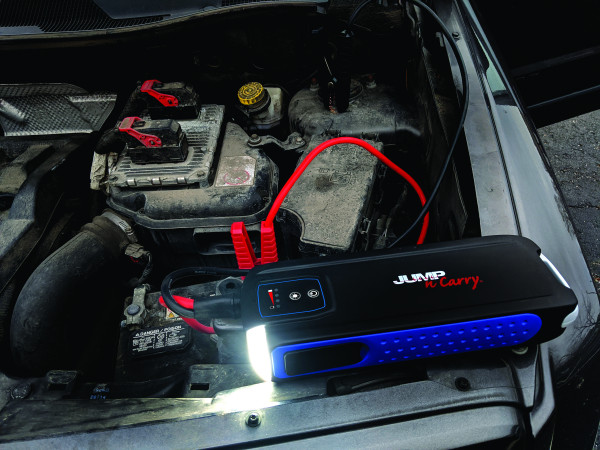 Every operation is different. What works for one company/operator won’t necessarily work for another. Cost sensitivity can vary from operation to operation. When choosing a jump starter, start with your specific requirements. Are your starting 1-5 vehicles per day or 10-20 vehicles? What are the sizes of the typical engines you are starting? What weather conditions do you encounter? (I spoke to an operator in Northern Alberta, Canada this morning. His concern for -50˚F temperatures is not relevant for an operator in Tampa, Florida.) What is your recharging situation – will you go long periods of use between charging opportunities? How experienced is your team? Do you need other functions or are you looking for a tool specifically for jump starting? Determining the answers to these questions will help identify the option that best addresses your specific jump starting needs.
Every operation is different. What works for one company/operator won’t necessarily work for another. Cost sensitivity can vary from operation to operation. When choosing a jump starter, start with your specific requirements. Are your starting 1-5 vehicles per day or 10-20 vehicles? What are the sizes of the typical engines you are starting? What weather conditions do you encounter? (I spoke to an operator in Northern Alberta, Canada this morning. His concern for -50˚F temperatures is not relevant for an operator in Tampa, Florida.) What is your recharging situation – will you go long periods of use between charging opportunities? How experienced is your team? Do you need other functions or are you looking for a tool specifically for jump starting? Determining the answers to these questions will help identify the option that best addresses your specific jump starting needs.
For more information, visit cloreautomotive.com

